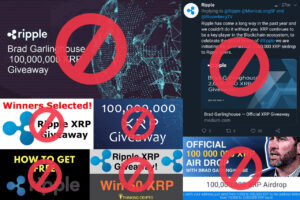In this edition of The Ripple Drop, we take a deep dive into all things NFTs, particularly XLS-20, a proposal for native NFTs on the XRP Ledger. Ripple General Manager Monica Long joins us to talk about the big picture for NFTs, the functionality of XLS-20 on XRPL, and the role NFTs should play in the path to sustainability.
Big Dreams for NFTs
While the most common use case today for NFTs is collectibles, and that’s been an exciting area and will continue to be so, Monica explains they can also go far beyond this.
“The applications of NFTs can extend to lots of different industries, but the core idea is about ownership.”
This idea of ownership of a digital asset is paramount when it comes to transparency. NFTs live on blockchains, public ledgers, which are inherently transparent. This allows for an immutable record of transactions and data and a single source of truth around ownership, something Monica says can be particularly helpful for assets such as, for example, real estate titles or carbon credits.
The XRP Ledger (XRPL) has always been efficient in the creation and exchange of tokens since its inception in 2012. “The XRP Ledger was the first to enable the tokenization of any form of value on a blockchain. It also introduced to the world the concept of a decentralized exchange,” Monica explains.
The XRPL offers huge advantages to those building NFT projects, including very low transaction prices on a high throughput blockchain that is carbon-neutral. XRPL transaction fees are about a half penny—a powerful value proposition for developers of NFT projects that may have been previously deterred by expensive gas fees on other blockchains.
Today, we’re seeing many use cases in the realm of art, media, and entertainment. Monica tells us as we look to the future, we can expect to see NFTs expand to have a multitude of enterprise applications as well, especially within financial services.
XLS-20 Unlocks New Potential for Creators on XRPL
This XLS-20 standard proposed by Ripple—now up for approval from XRPL validators—makes the creation of NFTs on the XRPL very compact and efficient, reducing any negative impact to the XRP Ledger’s performance and avoiding congestion at scale. Monica explains that with XLS-20, developers can create NFTs without the additional security risks and complexities—and therefore room for error—that come with smart contracts since XRPL does not require them to run to accomplish many tasks. With features like minting and auctioning built into the standard, XLS-20 seeks to bring significant ease to the developer’s creation process.
Monica stressed how Ripple has “always believed that the power of XRP Ledger is in tokenization, liquidity, and settlement. It’s so good at doing these things across a broad set of use cases on a global scale, and that is what builds us toward the Internet of Value.”
Democratizing access to blockchain and crypto among various use cases—such as payments or carbon credits—presents a unique opportunity. “Those markets are more competitive and efficient, there’s more empowerment toward the end-users or the creators, making the world of value creation and movement just as efficient as information exchange,” says Monica.
Sustainability Through NFTs
Sustainability has been a key impact platform for Ripple, with the company committing to carbon neutrality by 2030 and pledging $100 million toward carbon market investments this past May. These initiatives also extend to the XRPL—the world’s first major carbon-neutral blockchain.
“We really believe that there’s a powerful product-market fit for carbon credit markets on blockchain.” As it stands, these markets suffer from similar problems seen in the world of payments—including efficiency issues that blockchains are great at solving through the creation of a global fabric offering transparency across different markets.
Already we’re seeing companies take this use case and bring it to the XRP Ledger. For example, Xange.com, a securities exchange operated in partnership with the United Nations, announced they’re in the process of building a carbon credit marketplace on XRPL.
Join Monica on the Ripple journey today.


